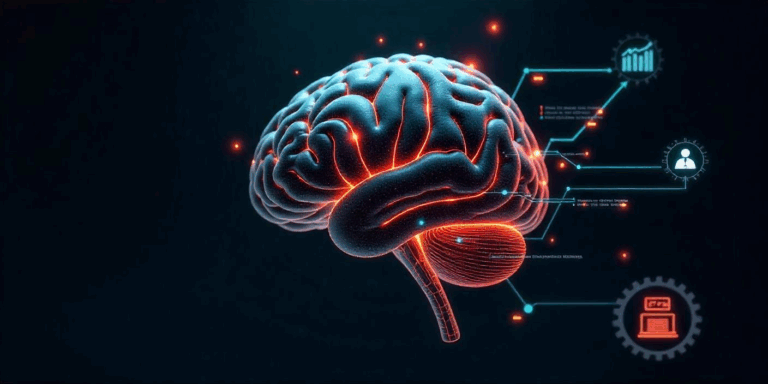
As artificial intelligence (AI) systems become more capable, autonomous, and integrated into society, the challenges surrounding security, governance, and ethics have reached critical importance. In 2025, it is no longer just about what AI can do, but also how it does it, who controls it, and what risks it poses to individuals, organizations, and global stability.
From deepfake scams and autonomous agents to data privacy and algorithmic bias, today’s AI landscape demands strong, adaptive, and transparent oversight. This blog explores the evolving world of AI governance, security protocols, and ethical frameworks that aim to keep this powerful technology in check.
🧠 The Complexity of Modern AI Systems
In 2025, AI has evolved far beyond traditional rule-based systems. With multi-agent architectures, LLM-powered workflows, and autonomous decision-makers, today’s AI:
- Learns from dynamic environments
- Makes contextual decisions in real time
- Influences financial markets, supply chains, healthcare, and even legislation
This complexity has created a new category of risks:
🔺 Emergent Risks in 2025:
- AI hallucinations in critical applications (e.g., legal, medical)
- Autonomous agents acting unpredictably or executing tasks without human review
- Data leakage through prompt injections
- Manipulative deepfakes and synthetic identity fraud
- AI-generated code with backdoors or vulnerabilities
- Black-box behavior—even developers struggle to explain the “why” behind outputs
Hence, security and ethics must be built into the AI stack—not added on top.
🔐 Security: Protecting AI from Threats
1. AI Supply Chain Security
- Organizations now inspect their AI models the way they inspect software dependencies.
- Tools like Model Cards, SBOMs (Software Bill of Materials), and Model Provenance Tracking are becoming standard practice.
- Example: Microsoft’s Responsible AI Standard includes tracing datasets, annotators, and prompt logic.
2. Model Hardening Against Attacks
To secure LLMs and agents, developers deploy:
- Prompt injection defenses
- Output filtering & reinforcement tuning
- Rate limiting, sandboxing, and API firewalls
- Watermarking for generated content
Cybercriminals now use AI, too. Hence, AI red teaming (ethical hacking of AI systems) is on the rise, pioneered by firms like OpenAI and Anthropic.
3. Data Protection in AI Workflows
As AI consumes and generates data, it must comply with:
- GDPR, DPDP Act (India), CCPA
- New mandates like AI Act (EU) enforce transparency on training data and outputs
Companies embed differential privacy, federated learning, and zero-knowledge proofs to secure sensitive user data.
🧭 Governance: Managing AI Systems at Scale
Governance refers to the policies, structures, and mechanisms that manage how AI is built, deployed, and maintained.
1. Organizational Governance (Internal)
Many enterprises now have a Chief AI Governance Officer (CAIGO) or dedicated Responsible AI teams who:
- Conduct risk assessments
- Approve AI use cases
- Audit decision processes
- Ensure compliance with laws and internal standards
🧩 Tools like ModelOps, AgentOps, and LangChain Guardrails help monitor AI performance, accuracy, and behavior across time.
2. Global Governance (External)
Countries and international coalitions are drafting comprehensive AI policies:
- EU AI Act (2025) classifies AI use cases into risk categories
- OECD AI Principles, UNESCO AI Ethics Recommendations
- India’s AI Bharat Framework focuses on inclusion and linguistic diversity
- US NIST AI RMF provides a risk management framework for AI developers
Multinational companies must navigate a patchwork of regulations, prompting them to invest in AI policy compliance infrastructure.
⚖️ Ethical Oversight: Aligning AI with Human Values
Ethics is the heart of responsible AI. In 2025, the biggest concerns include:
1. Bias & Fairness
- Datasets often carry historical or societal biases.
- AI models can perpetuate discrimination in hiring, credit, or legal systems.
- Solutions:
- Bias audits (pre- and post-deployment)
- Diverse data curation
- Fairness constraints during training
- Transparency into model decisions (XAI)
2. Explainability & Transparency
- Users demand to know why an AI made a decision.
- Explainable AI (XAI) techniques like saliency maps, LIME/SHAP, and chain-of-thought outputs are critical for trust.
3. Accountability & Human Oversight
- No matter how smart AI becomes, humans must remain in the loop.
- Human oversight is mandated in high-risk applications (e.g., autonomous weapons, healthcare diagnoses).
- “Who is liable if AI makes a mistake?” is a central legal question in 2025.
4. Digital Rights and Consent
- AI-generated deepfakes have raised alarms about consent, identity, and misinformation.
- Ethical AI must respect:
- The right to be forgotten
- Data usage transparency
- Consent for training and deployment
🧪 Case Study: Deepfake CEO Scam (2025)
In early 2025, a global telecom company was scammed when an employee transferred $20M after attending a Zoom call with a “deepfaked CEO.” The voice, face, and gestures were AI-generated. It triggered:
- New deepfake detection protocols
- Mandatory human confirmation for high-risk decisions
- Lawsuits about responsibility between vendor and victim
This incident highlighted how AI security and ethical oversight can no longer be reactive—they must be proactive and embedded.
🛠️ Tools & Frameworks You Should Know
| Tool / Framework | Purpose |
|---|---|
| TRiSM (Trust, Risk & Security Mgmt) | AI lifecycle monitoring |
| AI RMF (NIST) | Risk management framework for AI |
| OpenAI Eval + Red Teaming | Adversarial testing of AI agents |
| AI Fairness 360 (IBM) | Bias detection toolkit |
| Google Model Cards | Documenting model info, purpose, limitations |
| LangChain Guardrails | Guardrails for agent behavior and prompts |
| Explainable AI (XAI) | Tools to make AI decisions interpretable |
💡 Best Practices for AI Governance in 2025
- Establish Responsible AI Committees
- Document everything: Data sources, model purpose, usage scope
- Continuously audit model behavior
- Monitor for emergent risks (new, unpredicted behavior)
- Engage diverse voices in dataset creation and policy
- Adopt ethical AI certifications (like IEEE 7000 standards)
🧭 Final Thoughts
As we charge into the future of AI—powered by autonomous agents, real-time decision-making, and global-scale integration—the stakes have never been higher. Security lapses can cause national crises. Biases can marginalize millions. Lack of transparency erodes trust.
In 2025, building AI is not enough.
We must govern it. Secure it. Question it. Audit it. Explain it. Humanize it.
The organizations, governments, and builders who take ethics and oversight seriously today will be the ones who shape a safe, fair, and powerful AI-driven tomorrow.





